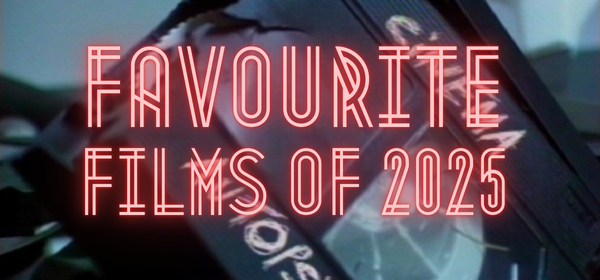Today we'll look at the seventh letter of the Arabic alphabet, KHaa. With only 28 letters in the Arabic alphabet, today is a real milestone - you now know a quarter of all the Arabic alphabet letters. Promised it would be easy! Mabrook [ma-brook] congratulations and well done :-)
The Sound of KHaa
KHaa is the second letter in the Arabic alphabet we have come across which does not have an equivalent sound in English and is definately not the same as the English letter 'K'. It is a far stronger and deeper sound.
To say Khaa correctly, imagine you have something stuck in your throat and you need to get rid of it. Try clearing your throat from the back of your mouth and make a 'Khaa' sound at the same time. You should be able to feel the sound being made at the back of the roof of your mouth, a sort of rippling of the back of the roof of the mouth.
What you're aiming for is the sound of the letters 'ch' in the Scottish pronunciation of the word 'Loch'. To make sure you've got the correct tone practice making the sound a few times and then check your pronunciation with a native Arab speaker.
KHaa: Reading and Writing
Khaa is written in exactly the same way as the previous two letters, Jiim and Haa, but this time the dot goes above the letter like this:
The Sound of KHaa
KHaa is the second letter in the Arabic alphabet we have come across which does not have an equivalent sound in English and is definately not the same as the English letter 'K'. It is a far stronger and deeper sound.
To say Khaa correctly, imagine you have something stuck in your throat and you need to get rid of it. Try clearing your throat from the back of your mouth and make a 'Khaa' sound at the same time. You should be able to feel the sound being made at the back of the roof of your mouth, a sort of rippling of the back of the roof of the mouth.
What you're aiming for is the sound of the letters 'ch' in the Scottish pronunciation of the word 'Loch'. To make sure you've got the correct tone practice making the sound a few times and then check your pronunciation with a native Arab speaker.
KHaa: Reading and Writing
Khaa is written in exactly the same way as the previous two letters, Jiim and Haa, but this time the dot goes above the letter like this:
 Below you'll see the letter KHa in all four positions (read from right to left), independent, initial, medial and final. Once again, as with baa, taa, thaa and Jaa, always draw the lines first, then the dot/s:
Below you'll see the letter KHa in all four positions (read from right to left), independent, initial, medial and final. Once again, as with baa, taa, thaa and Jaa, always draw the lines first, then the dot/s:
Examples of the Letter 'KHaa'
Initial
In the example below, 'KHaa' starts the word 'Khalifa' and the next word 'bin' starts with a 'baa':


Medial
Below are a couple of examples of the letter 'KHaa' placed in the middle of a word. The first KHaa occurs in the middle of the word 'exit' or mukroj [muKH-rooJ]


TASK 1:
How many alif's, taa's and Jiim's can you find in the photos above? In what form do they occur; independent, initial, medial or final?
Final
In the following example KHaa is written in the final form.
In the first photograph the KHaa occurs at the end of the word 'Shaikh'.
The word preceeding that you should be able to recognise, 'bait' in Arabic or in English, 'house'. Remember, nouns always, always, always come before adjectives in Arabic.


Hide & Seek 1
See how many of the most recent letters you have learnt, 'KHaa', 'Haa' {wgaw blog archive: 16/o4} and 'Jiim' {wgaw blog archive: 11/o4} you can find in the photos below.
Once you've found them decide in which format they occur; initial, medial, final or independent:

The first line in the photo above says; 'society Gulf disablity' it then goes on to say;
"Regional majlis [maj-lis] (the place, which is outside a house, where you sit and talk with your friends/colleages) charity Gulf Arabic".

Hide & Seek 2
Now see how many alif's, baa's, taa's and thaa's you can find in the two photos above.
Overview
1. The seventh letter of the Arabic alphabet is called KHaa
2. The are four different forms of the letter KHaa; independent, initial, medial and final
3. The letter KHaa changes its form depending on its location in the word, but the basic structure is always the same; one dot below the line
4. KHaa is a connector and so joins with the letter which preceed and follow it.
Practice/Homework
Should you wish to practice writing the letter 'KHaa':
1. Complete all the tasks in the article above
2. Using lined paper write the letter 'KHaa' in all four forms, as many times as you can; initial, medial, final and independent. Because taa is a connector you'll be able to connect 'KHaa' initial, followed by taa medial, and completed by taa final. A minimum of 20 repetitions is suggested, always remembering to write the lines first and then the dots.
3. Look for examples of the letter KHaa in road signs and try to work out the sound of the letter following it, using deduction from the English translation. This should start to build confidence in your ability to read Arabic.
What's Next?
The next letter of the Arabic alphabet to be explained is the letter 'daal' and this will be posted on Thursday, 11th March {see wgaw blog archive: 11/o5}

























































































































No comments:
Post a Comment